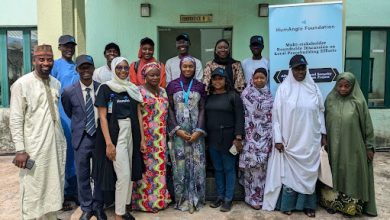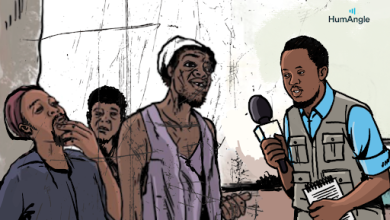
The Federal Government began work on the facility during the administration of former President Shehu Shagari.
Shagari was Nigeria’s president between 1979 and 1983 when former president, Muhammadu Buhari, toppled his government in a putsch.
At least two contractors have handled the project from inception.
A source close to the project’s current contractor told The ICIR that the Federal Government disengaged the former contractor and re-awarded the centre to Tekno Concept Nigeria Ltd and Borwa Engineering Services Ltd in 2013.
He did not state why the government parted ways with the former contractor.
The new firms, which appear to be managed by the same person, Yerima Mustapha, have since been working on the project for a decade without completing it.
NCoS declines FOI requests
The Nigerian Correctional Service (NCoS) manages all correctional centres in Nigeria.
In August and September 2022, The ICIR twice requested information on the budgets for the centre and the reason for the delay in its completion from the NCoS through a Freedom of Information (FOI).
The NCoS acknowledged the letters but refused to respond to them. The ICIR had made a similar request from the Accountant-General’s Office. The Office referred The ICIR to the NCoS.
According to the FOI Act, the NCoS’ refusal to provide the information or write this organisation on why it did not make the information available is an affront to and is punishable by the law.
Contractor evades speaking on project
Further findings by The ICIR showed that Suleiman Jajere, an engineer, is in charge of the project.
Jajere has severally turned down this organisation’s requests for information on the centre.
The ICIR sought to know what delayed the completion of the project and how much his company got from the government for the work.
He kept promising to meet The ICIR’s reporter physically in Abuja, where he claimed to live, but he never did, despite several reminders in calls and text messages.
His brother, Ahmed Goni, is the ‘accountant’ for the firm at the project site.
Goni claimed he was not an employee of Jajere’s company but was helping the firm handle its funds and pay workers because Jajere lives far from the project site.
Gashua has two correctional centres
Gashua town has two correctional centres – the Federal Correctional Centre and the Maximum Correctional Centre under construction.
Available information on the old facility shows the government built it in 1927. The centre still functions but faces many challenges. It is among 244 correctional facilities in the country.
The late famous human rights lawyer, Gani Fawehinmi, was among the prominent Nigerians who served at the facility. Fawehinmi summed up the centre’s condition as follows after he came out of the facility in 1989 when the centre was still much better than it currently is.
“The cells there are terrible. I was detained there in 1989. So I know what I am saying. The cell is about 18 feet by 10 feet. It is surrounded by yet another big terrible wall which is 22 feet. So there is no way air is going to penetrate this cell.
“The windows are so tiny; it is built in such a way that when you peep out of the windows, it is the outer wall that you will see. The outer wall overshadows the cell completely. There is just a little space between the cell and the wall. So I started sweating the very moment they opened the cell and locked me in.
“The cell I was put in is Cell D, which is solitary confinement, far removed from other cells. The cell has no ceiling; it has only perforated sheets, which make heat penetrate fully into the cell. The floor is not cemented; there is no bed, no mattress. In my case, I was given a mat.
“Any time I remember that cell, I get agitated because of what I suffered while in detention. At one corner of the room, there is a very small pail; at another corner of the room is another small pail. I used the one by the left for defecation, and the one by the right for urinary purposes, reported the Nation newspaper.
A source told The ICIR that the centre’s condition has been much worse than in the ’80s.
Checks by The ICIR also revealed that the old correctional centre in the town is congested and uncomfortable for the NCoS staff and other people at the facility.n.
“After spending billions of naira on that massive project in the past years, it is surprising that the Federal Government has yet to complete it,” said a prominent indigene of the town who did not want his name in print.
In 2014, a former Minister of State for Finance, Yerima Lawan Ngama, who hails from the town, assured that the facility would be completed.
Many residents said the government started work simultaneously on the uncompleted centre and its counterpart in Potiskum, another community in the state.
The Potiskum Centre was completed over a decade ago and has since been in use.
Background to this story
In April 2022, The ICIR reporter was in Gashua to verify the potable water projects executed in the community with the CACOVID fund.
The reporter saw the abandoned project while checking the water projects across the town.
Apart from remaining uncompleted, residents said a vast land adjacent to the centre was for building the organisation’s staff quarters. The ICIR reporter saw several residential buildings on the land, which many residents claimed belonged to illegal occupants.
Available budgets for Nigerian correctional centres
Capital budgets for correctional centres between 2009 and 2022, available on the website of the Budget Office of the Federation, show that only 2014 and 2015 had a distinct capital budget for the new Gashua correctional centre.
They are N160.5 million for 2014 and N85.5 million for 2015.
Other capital appropriations for building correctional centres were lumped together in other years. They include “completion of 12 uncompleted prisons”, “construction/provisions of prisons”, and “cost of completion of prisons.” Government ministries, agencies and departments use blanket titles like these to siphon funds.
Budgets record sharp rise under Buhari
Budgets for building correctional facilities enjoyed an astronomical rise under the Buhari government, which vowed to fight corruption to a standstill and jail looters. But global corruption ratings show that the nation remains neck-deep in the menace. Buhari’s government had many appointees that were booted out of office during his eight years, which ended on May 29.
Available data show that the government approved the following amounts for building prisons between 2009 and 2023 and gave them different names:
- 2009: N375.25 million (completion of uncompleted prisons)
- 2010: N503.92 million (completion of uncompleted prisons)
- 2011: N570,449 million (construction/provison of prisons)
- 2012: N612,404 million (construction/provison of prisons)
- 2013: N1.31 billion (construction/provison of prisons)
- 2014: N160.5 million dedicated to Gashua prison.
- 2015: N85.5 million dedicated to Gashua prison.
- 2016: N2.640 billion (provision of prisons)
- 2017: N8.32 billion (construction/provision of prisons)
- 2018: N8.07 billion (completion of prisons nationwide)
- 2019: N8.02 billion (construction/provision of prisons)
- 2020: N4.31 billion (completion of prisons nationwide)
- 2021: N6.73 billion (construction/provision of prisons)
- 2022: N5.58 billion (construction/provision of prisons)
- There is no budget for the Gashau new centre in the 2023 budget, but the government will spend 22.4 billion on the NCoS’ capital projects.
How much does it cost to build a correctional centre?
Some contractors with the NCoS, including Elder Sunday Ladejobi, an engineer, said only the government knows how much it could cost to build a complete correctional centre. They said different contractors handle various sections and infrastructures, making it difficult for a firm to provide an estimate for building a centre.
State of Nigerian correctional centres
In 2022, The ICIR reported how terrorists attacked 18 correctional centres and released inmates, including other terrorists. Similarly, in a report in July 2022, this organisation showed how the female population in the nation’s correctional centres was only two per cent.
In another report, The ICIR showed how 3,167 inmates were on death row in the country as of December 2022. There were 74,872 inmates in Nigeria correctional centres – 73,186 males and 1,686 females – as of Wednesday, May 17.
On May 13, the federal government said it would no longer feed state inmates but would only feed only those its court convicted. The government claimed it spent one million naira on an inmate yearly.
This report was originally published by the International Center for Investigative Reporting (ICIR).
Support Our Journalism
There are millions of ordinary people affected by conflict in Africa whose stories are missing in the mainstream media. HumAngle is determined to tell those challenging and under-reported stories, hoping that the people impacted by these conflicts will find the safety and security they deserve.
To ensure that we continue to provide public service coverage, we have a small favour to ask you. We want you to be part of our journalistic endeavour by contributing a token to us.
Your donation will further promote a robust, free, and independent media.
Donate HereStay Closer To The Stories That Matter




